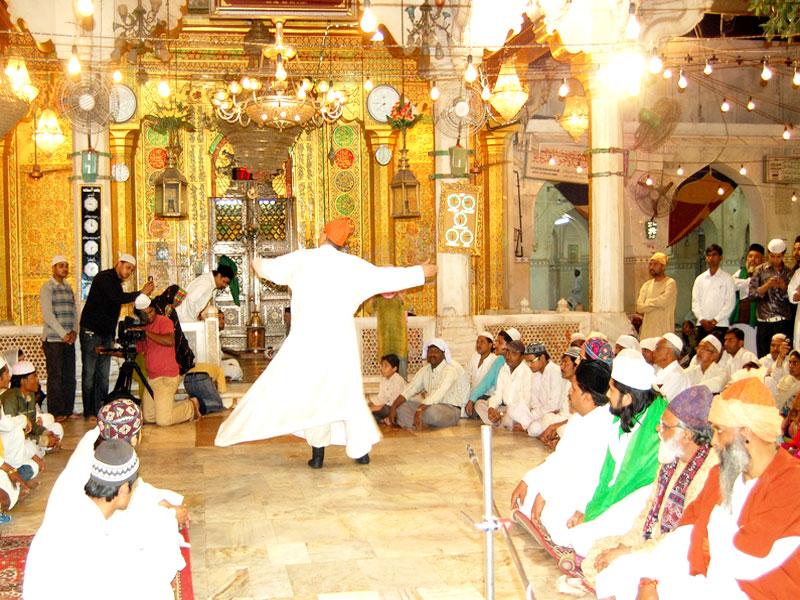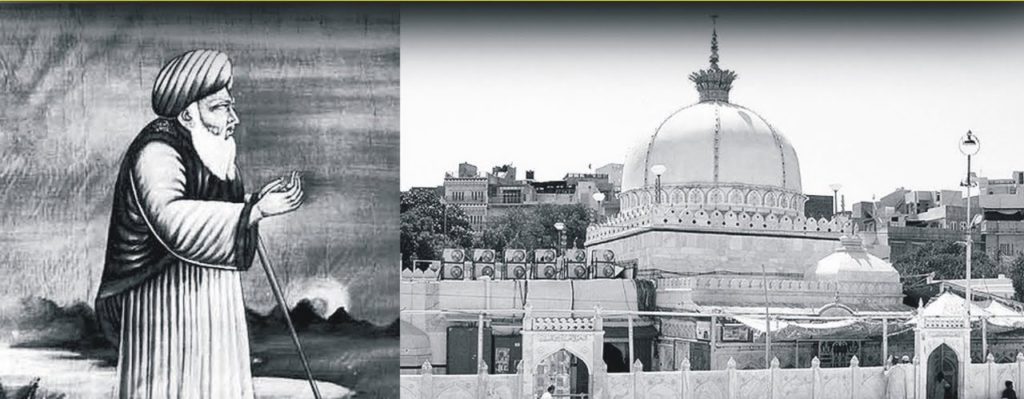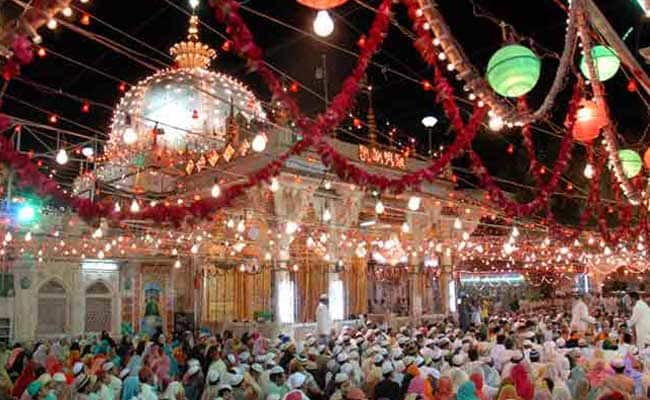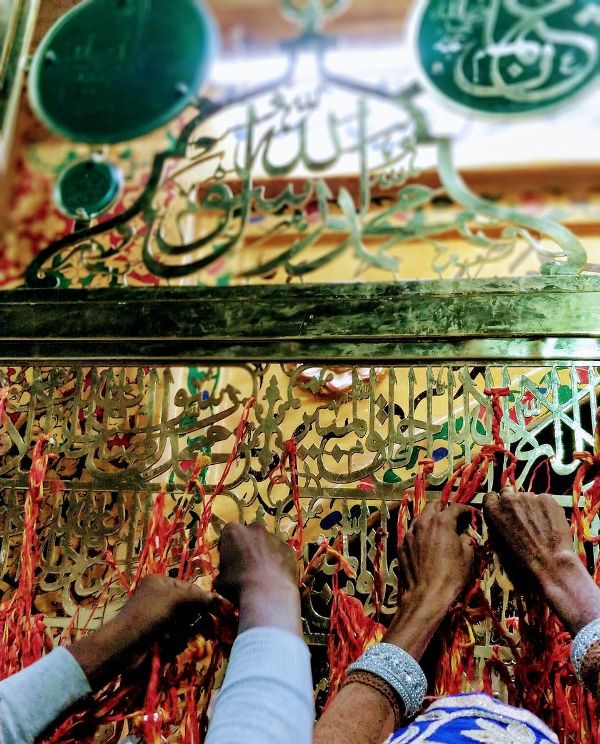The 807th Urs of Sufi saint Khwaja Moinuddin Chishti, who started the identification of communal harmony and mutual love in the country, has begun. After seeing the moon the yearly Urs of Garib Nawaz started.
Today, the Jannati Darwaza was also opened in the dargah of Khwaja Garib Nawaz in Al Mardan. Zairines waited for the Jannati Darwaza to open from late in the night. Khawaja’s Urs runs for 6 days. Before this, the flag ceremony is performed .
Let me tell you that the Jannati Darwaza located in the dargah of Sufi saint Khwaja Moinuddin Chishti is opened four times a year for the Zairines. This door is opened for 6 days in during the Urs. Apart from this, one day on Eid, on the 6th day of Eid, on the big government’s Urs one day and on Bakra Eid, the Jannati Darwaza is opened for one day. It is said that Khwaja Garib Nawaz used to go through the Jannati Darwaza often for worship, hence the great importance of this door is considered.
Significantly, with the appearance of the moon of the month, the annual Urs of Garib Nawaz is started duly from 7 March.
Urs will have a close end on March 17. It’s the most crowded in the seventh month of the Islamic calendar when the pilgrims and sufis come from all over the world on Urs – the anniversary of the saint’s death.

The most beautiful experience here is when after namaaz is offered, “qawwalis” praising Allah are sung by devotional singers inside Ajmer Sharif’s hall, mehfil-e-sama, every single day.
History of Ajmer Sharif Dargah
India is a complete land, there are many places of pilgrimage where people of every religion go with faith. One such pilgrimage place is Ajmer Sharif Dargah – Ajmer Sharif Dargah, it is said that whatever veneration you ask in Ajmer Dargah Is complete. This dargah is the dargah of Khwaja Muinuddin Chishti.
Moinuddin Chishti is known as Khwaja Garib Nawaz. He was an Imam who was an Islamic scholar and philosopher of South Asia. In the Indian subcontinent, he spent his life in the introduction and establishment of the Chishti Order of Sufi. Qutbuddin Bakhtiar Kaki, Fareeduddin Ganjashakar and Nizamuddin Auliya are the first successful followers to include the initial spiritual link or the Chishti chain in India. This is one of the great Sufi saints of Indian history, many Mughal emperors also believed Chishti.
Personal life of Moinuddin Chishti –
It is said that Chishti was born in 1141 CE in the city of Chishti between Afghanistan and Iran. His mother and father died when he was only 15 years old. The descendants of Mohammed Sayyed inherited the garden of the heritage and the wind mill. Chishti was different from other children in his childhood. He kept himself engaged in the constant prayer and meditation of the fate. It is said that he sold his their personal property and gave up the money received to the poor and gave up everything and was on spiritual path for higher knowledge. Usain Harooni’s Moinuddin Chishti became a murid.

Journey of Khwaja Garib Nawaz-
Living with Chishti Samarkand, a Bukhara guru, he studied religion and gethered knowledge about Muslim customs and religion . He became the follower of Usman Harooni and went to Mecca Medina in the Middle East to Chishti.
Journey to India –
After Chishti came to India, his dream was that he would receive blessings from Muhammad. After a long time living in Lahore, Muizaj came to Ajmer with Al-Din Muhammad and he settled down. Moinuddin Chishti Worked between bridge between Muslims and non-Muslims.
Chishtiya laid the foundation of outh Asia-
The Chishtī Order is a Sufi order in the Sufi tradition of Islam. About 930 CE, it began in Chisht, a small town near Herat, Afghanistan . The Chishti Order is known for its emphasis on love, tolerance, and openness.The Chishti Order is primarily followed in Afghanistan and South Asia.
Moinuddin Chishti introduced the Chishti Order in Lahore (Punjab) and Ajmer (Rajasthan), sometime in the middle of the 12th century CE. He was eighth in the line of succession from the founder of the Chishti Order, Abu Ishq Shami. There are now several branches of the order, which has been the most prominent South Asian Sufi brotherhood since the 12th century.In the last century, the order has spread outside Afghanistan and South Asia.
They built a different world. In his other words, his definition of religion was such that man is a disciple who must have the same river-like generosity and sun-like affection. According to him, Bhakti has the highest power, should help those who are suffering, hunger-hunger should be eradicated. Ajmer was a major pilgrimage center of India in Akbar’s period (1556-1605). Then the Mughal Emperor also took interest in Ajmer when he listened to religious songs so that his sleep went away.
Moinuddin Chishti also wrote two books, Al-Arwa and Dalil Al-Arifin, which included life in Islamic way.
Qutbuddin Bakhtiar Kaki and Hameeduddin Nagori, who had been chanted by Chishti, imposed a precept to all the disciples in the form of a guru.
One of the finest disciples of Qutbuddin Bakhtiar Kaki was Fareeduddin Ganjahakar. Their dargah is now in Pakistan. Firiduddin’s outstanding disciple was Nizamuddin Auliya and his dargah was in south Delhi. Another disciple’s dargah is in kaliyar Sharif. The Sabri series had a lot of spread in India and Pakistan.
His disciples came out from Delhi and all made their own dargah in South Asia from Sindh West to East Bengal and Deccan Plateau South. Of all the dargahs of the Chishti Dargah, the dargah of Ajmer is prominent.
Ajmer Sharif Dargah

The Chishti Dargah is also famous as Ajmer Sharif Dargah or Ajmer Sharif. The Dargah is recognized under the government Dargah Khwaja Saheb Act 1955. The Government of India has constituted a Committee for Dargah, which keeps the account of the offerings in the Dargah, also maintains the areas around the Dargah. Many religious institutions also run. Such as the hospital, Dharamshala for the devotees. But they chiefly Khadim looking after the inner parts of the dargah.
Significant of the Jannati Darwaza
It is believed that after passing through the Jannati Darwaza, the Dargah, there is fate. This door is opened only four times a year. To get through this door waiting for its turn by standing in line for the good hours. Khadim Qutubuddin Sakhi explains that Khwaja used to use this path for poor Nawaz Adinat. Allah said this to Khwaja Sahib that if people who do not make Mecca’s land, then if they pass through this gate then they will be treated as their journey.

From this door, the lakhs of people pass through and go to Khajja Saheb’s mazar and pray. On completion of the vow of gratitude, the untimely ones also come here to open the yarn thread and pay Shukarna.
Note: If you have more information in Ajmer Sharif Dargah History Or you feel anything wrong or to be added, let us know at editor@riaan.tv..we will keep updating this as soon as possible .
